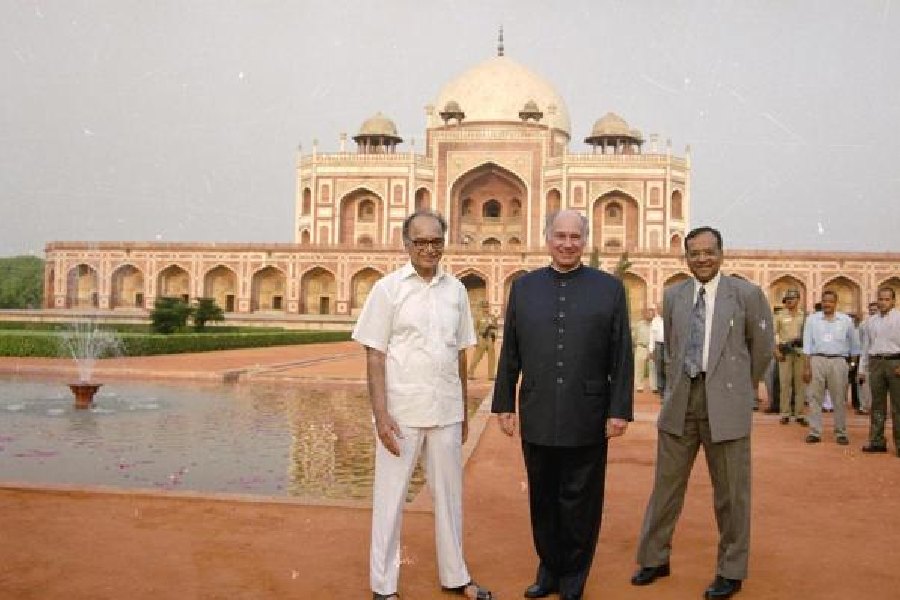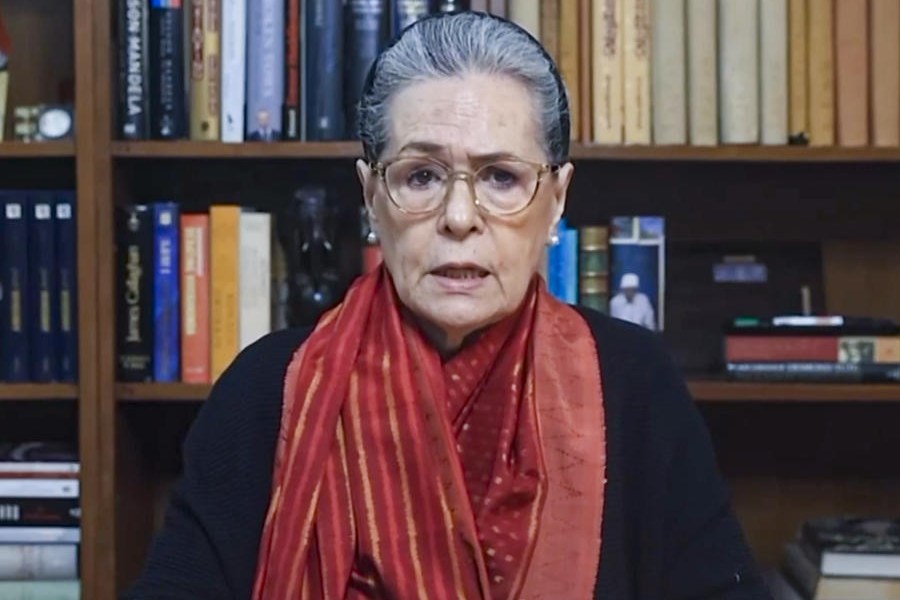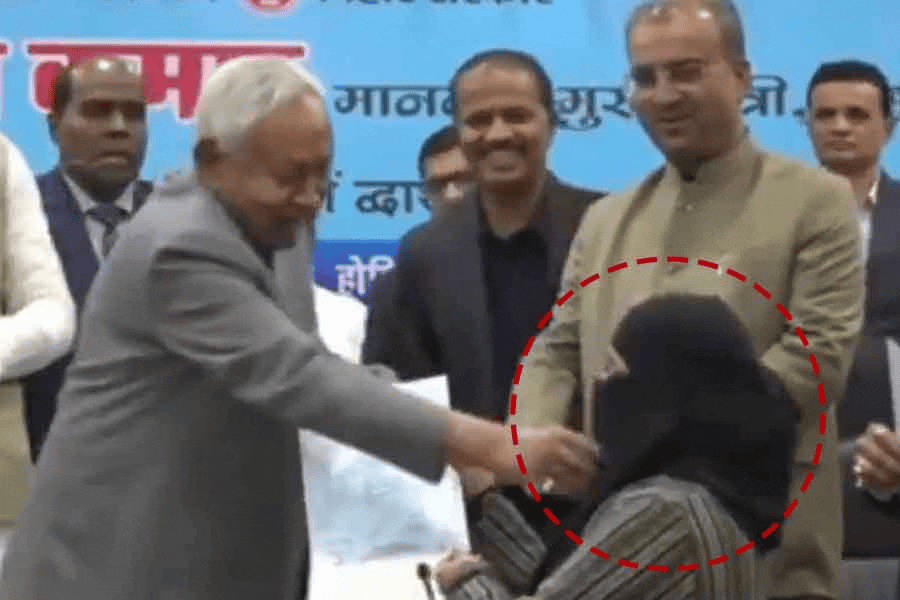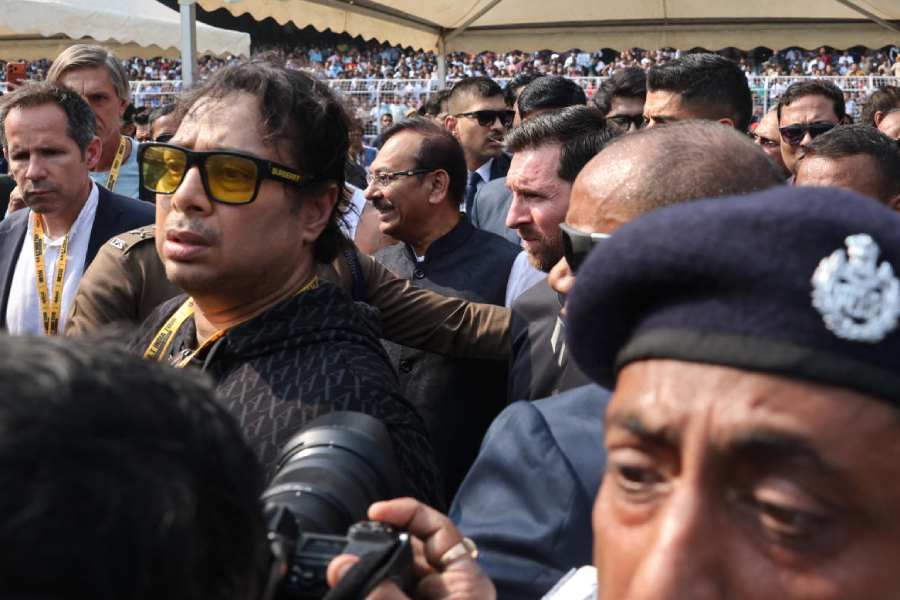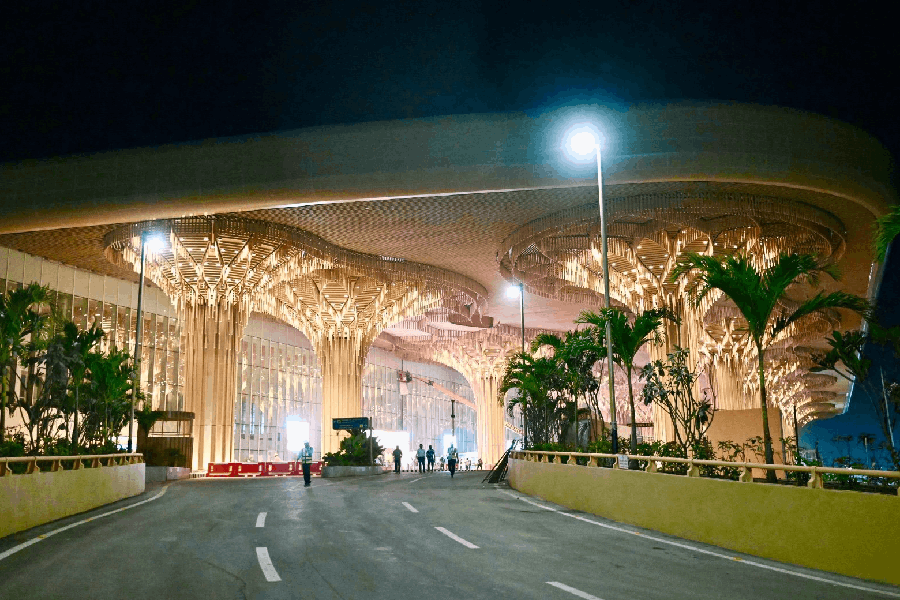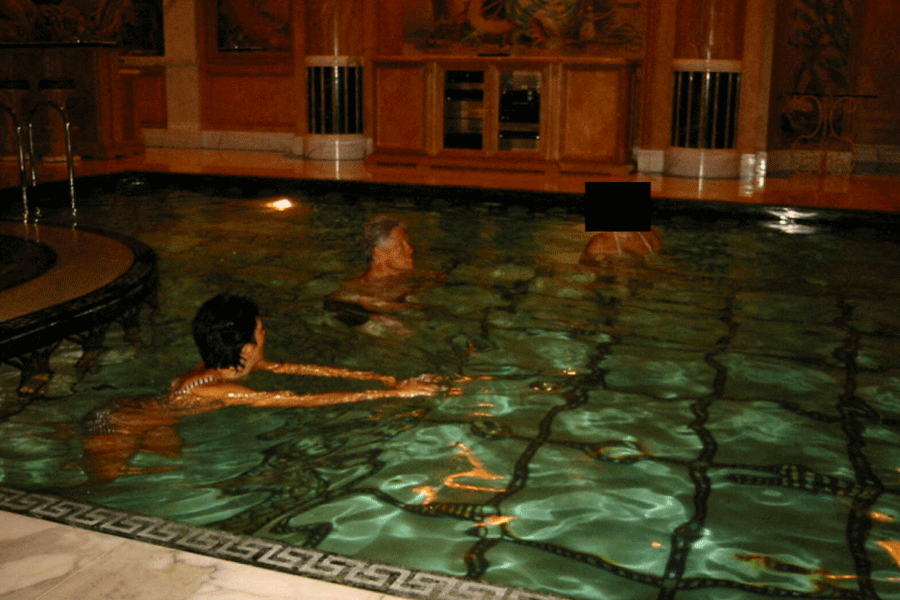Aga Khan IV, the spiritual leader of Ismaili Muslims and a philanthropist, was a visionary who had seamlessly blended heritage conservation with socio-economic welfare.
In Delhi, the Aga Khan Trust for Culture (AKTC) had restored Humayun’s Tomb and the monuments surrounding it and improved the quality of life for the people living in the area through the Hazrat Nizamuddin Basti Urban Renewal Project.
The group also created the finest museum on the Mughals at the site and is currently engaged in a similar project at the Qutub Shahi Tombs in Hyderabad.
AKTC India CEO Ratish Nanda told The Telegraph that Khan was “far ahead of his time” in envisioning this manner of conservation.
“It is only because of his vision that we could dare to take on such mega projects…. The world has begun to notice what he spoke about 50 years ago and we are grateful that the Indian government recognised him with a Padma Vibhushan in 2016,” Nanda said.
The Aga Khan Development Network (AKDN), of which the AKTC is a part, works in 30 countries with 96,000 employees and an annual budget of a billion dollars.
In September 2013, the AKTC completed the restoration of Mughal emperor Humayun’s 16th-century garden tomb. Standing on the west bank of the Yamuna, Humayun’s Tomb is a close neighbour of Nizamuddin Dargah, the mausoleum of revered Sufi saint Nizamuddin Auliya. The dargah is located within a crowded urban village in the centre of Delhi. The AKTC had set up civic infrastructure, toilets, anganwadis, schools and vocational training centres here.
This, explained Nanda, is in line with Khan’s vision of improving the living conditions for people in some of the poorest parts of the developing world and doing so without discrimination.
“We all struggled to fulfil that vision as the bar was set so high. He does what even countries think of as impossible,” Nanda, a conservation architect, said.
Khan, also known as Mawlana Shah Karim Al-Hussaini, last visited India in 2018 on the diamond jubilee of his spiritual office, during which he toured the project sites in Nizamuddin as well.
There are around 15 lakh Ismailis around the world, a third of whom live in Pakistan. Members of the community are expected to set aside 12.5 per cent of their income for charitable work steered by Khan. Ismailis also have a presence in Gujarat where the first Aga Khan school was set up in 1905 in Mundra by the third Aga Khan, Sir Sultan Muhammed Shah, the first president of the All India Muslim League.
The Ismaili community said in a statement: “Mawlana Shah Karim’s successor, as the 50th Shia Imami Ismaili Imam, has been designated in conformity with the historical Shia Imami Ismaili tradition and practice of nass. The designation made by Mawlana Shah Karim is recorded in his Will which is to be read in the presence of the Imam’s family and senior international Jamati leaders. Thereafter, the Jamat will be notified of the declared Hazar Imam in whom the Nur of Imamat exists in unbroken hereditary succession from Mawlana Ali (peace be upon him).”
Khan was born in Geneva, grew up in Kenya and educated at Harvard. He steered clear of politics and projected himself as a bridge between moderate Islam and the West. He was known for breeding racehorses, the most famous being Shergar who won multiple premier derbies.
The horse was stolen at gunpoint from Khan’s farm in Ireland’s County Kildare in 1983. The unsolved crime had suspects ranging from the Provisional Irish Republican Army to Libyan ruler Muammar Gaddafi. Talks with the kidnappers broke off over exorbitant ransom demands. Police had reportedly engaged a clairvoyant to find the horse but to no avail.

